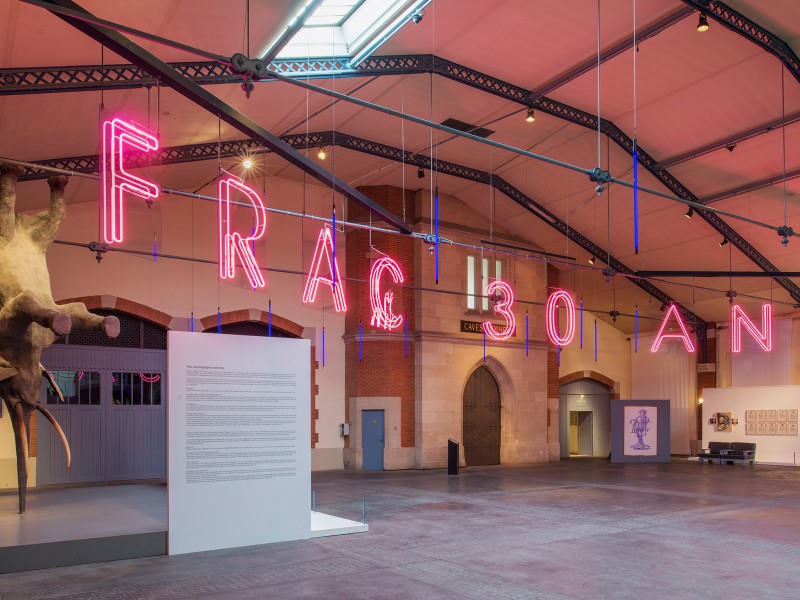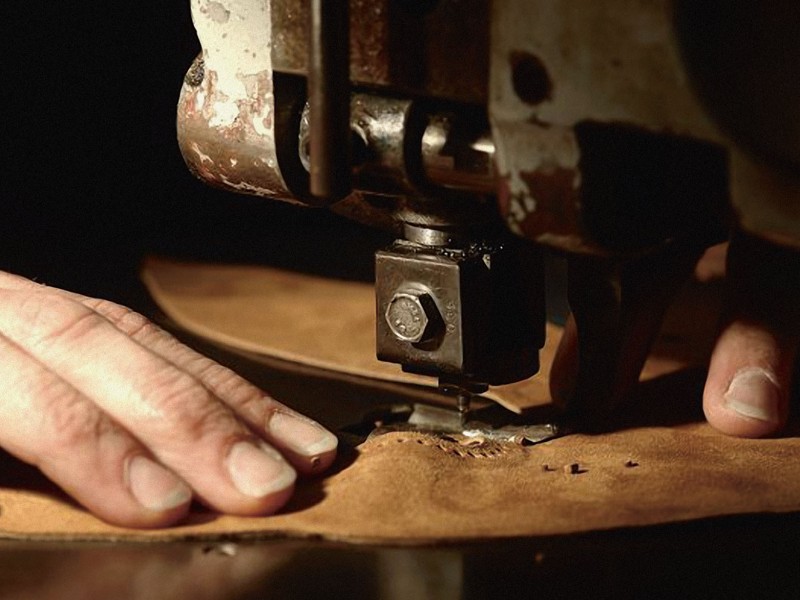My first encounter with Lebbeus Woods was in 2004 when the confusion of 9/11 was still pervasive. His book Radical Reconstructions (1997), fell open into my hands. It was staggering. These prescient constructions revealed something that hadn’t yet happened when the book was published.
Woods seemed to possess some profound insight into the complexities of the incident referred to as 9/11—expressing in drawings what others seemed to pass over/miss/dismiss/minimise choosing to go directly into the catastrophe and consequence—and in doing so miss the event itself. When so many could only utter political stances to cover up the pain, Woods instead expressed the entirety of the event. His drawings were strangely hopeful.
Lebbeus Woods (1940-2012) was an architect, artist and teacher who left behind a rich legacy. Best known for his visionary and experimental architecture and strong social/political positions, he examined life through masterful, and one might say, dystopian drawings. Lebbeus thought and expressed as an architect in the purest sense of the word, proposing interventions and insights regarding contemporary culture, community and more purely philosophical issues. He created spaces to dwell—almost exclusively intended as drawings and models. They suggest complexities, both in what has happened and how to live with what is most challenging, rather than ‘razing’ it by assigning it to a past.
Although known (and hailed) as a brilliant architect and exceptionally masterful draughtsman, he built only one building. Woods was part of a new movement in architecture that began in the mid-eighties that includes Zaha Hadid, Thom Mayne, Diller & Scofidio, Neil Denari, among others.
Many architects around this time began to focus on works on paper, models and teaching—in part caused by the competitive nature of the field and in part because of the entrance that drawing affords one. Lebbeus committed himself to drawing, where he found the freedom his architecture needed—to examine and build alternative ways to meet the increasing and pervasive issues that have come to mark contemporary life: crisis, instability and change. Due to shifts caused by war and politics, as well as the natural course of the earth’s movement (earthquakes).
His ideas took shape through drawings, installations, film, lectures and publications. They opened up possibilities for living with contemporary realities instead of nurturing a culture of ‘marketing’ by continually hiding the scars of the inevitable.
What makes his work (in all these mediums) powerful and hard to forget, is their vision, vigor and the uncompromising force around often uncomfortable issues. One gains entrance into a penetrating mind synthesising a profusion of elements (political, social, economic, cultural, etc.) rather than shutting them out. The force of these real instabilities in our lives is undeniable. Whether or not we give them our attention, they continue to produce affects.
Lebbeus’ drawings bring one into a sense that is at once teaming, chaotic and orderly. His vision is reminiscent of Piranesi—in its complexity, and the multiplicity of angles and views that take one into imaginary spaces for dwelling, but would be impossible to experience in a built construction. There is an inviting ‘thinginess’ to his work, a visceral quality that makes his work compelling and accessible. His drawings make apparent things we experience but are often not visible.
Despite their complexity and technical prowess they are hand-drawn rather than computer generated, which may be why we find ourselves drawn into these worlds. They are strongly suggestive of the kind of work a boy between the ages of nine and fourteen would create. Who instead of growing out of a phase of drawing ships, spaceships, cars and war themes, has moved on to more advanced constructions with more sophisticated ideas to explore.
The recent show at The Drawing Center, New York (April 17—June 15, 2014) exhibited the work of Lebbeus Woods spanning nearly four decades. The exhibition was curated by Joseph Becker, assistant curator of architecture and design, Jennifer Dunlop Fletcher, Helen Hilton Raiser, associate curator of Architecture and Design, San Francisco Museum Of Modern Art. Overlapping the exhibition, Cooper Union held a two day symposium celebrating Lebbeus Woods life with tributes from friends and colleagues—including Zaha Hadid, Thom Mayne, Steven Holl, Neil Denari, Michael Sorkin and Eric Owen Moss.
There is no trace of utopian fantasies, instead one finds an intensely considered response to crisis in cultural, social and political situations questioning, examining and theorising architecture in places of crisis. Rather than raze buildings destroyed by war, his projects in Sarajavo, Havana and Berlin are considered responses to the scars of war and or political strife, presenting possible ways to come to terms with those conflicts or at least to live with their history, rather than hide them. The dystopian quality of his work is counter to the profuse hope and life that emanates from them. They suggest a future, a continuance, not an ending.
“The shift of focus I have made from objects to fields has not been made simply as a rejection of typological thinking, which dominates the design of buildings; not simply as a rejection of the politics of identity that buildings inevitably work to sustain; nor simply as the rejection of the illusions of authority conjured by buildings, designed and built in the service of private or institutional power. It is a shift I have made in order to liberate in the first place, myself. If I cannot free myself from the reassurance of the habitual, how can I speak of the experimental, which is nothing without real risk, even loss? If I cannot free myself from obsession with the end-product, how can I advocate the revelations latent in the processes of making things? Without freedom from the tyranny of the object, how can I attain the measure of independence necessary to join with others, who, in the making of things, conquer their existence in the first place by their own efforts? If I cannot free myself, how can I advocate the freedom of others, in whatever terms they might choose?”—Lebbeus Woods, 2004.
Collapse, deconstruction, crisis and intervention are all words one associates with Lebbeus Woods’ architectural and visual examinations, versus the slick high concept building descriptive of most contemporary architecture. The structures that Mr. Woods builds are the gnarly ones, the result of complications and crisis that are born of 21st century problems. For Lebbeus the act of drawing and creating installations was as constitutive of building as an actual construction itself. Lebbeus accepted instability as part of contemporary life.
He was concerned with how we create spaces in the face of this situation finding ways to include the scars these disruptions have left—not erase them. “My idea of utopia, or an ideal state of conditions for humans, is not based on a harmonious melding of conflicting conditions, but rather the ‘free’ dialogue or open interaction between them. The utopian condition is one of conflict, achieving a dynamic balance of ideas, actions, forces, through continuous struggle to assert differences of every kind. This idea is based on the belief that the ultimate state of harmony is death.” Visionary and possible…his work is engaged, immersive, experimental—words those in architecture use to discuss his work.
Transdisciplinary and vigorous in his career and output, his work anticipated the strongly interdisciplinary current that is pulsing through all the design/creative professions today and the crossovers between them. Trained as both an engineer and an architect his chosen medium was drawing.
While he built only one building, his primary interests and occupation were issues of culture, war, politics and community structured in the language of architecture. Ultimately he understood architecture as a kind of text—with its own grammar and syntax. Lebbeus is hailed by architects, artists, filmmakers and painters for the “conceptual depth, beauty and ‘ethical potency’ that resonate across disciplines.” He was a committed architect in that his focus was on the fundamental activity of the field: to synthesise a diversity of forces (political, social, economic and cultural) into structure and think through the problems of organising and understanding space.
His structures are problematic in revealing the unresolved, not problematic in what needs closure. They take one into the scene of crisis and catastrophe without being dark. His courage is evident in tackling truly contemporary issues of catastrophe, crisis and destruction, which has so far marked this century in distinctive ways. We have now pasted over the postmodern climate. Terrorism, political changes, war and natural disasters like earthquakes mark contemporary ways of life. What Lebbeus asks us to look at is how we build in consideration of these very real and enduring forces. I feel strongly that the impact his work will have on the next generation of architects will be profound, and that his legacy may perhaps become more visible and known in absentia.
Image Credits:
Image 01. Conflict Space, 2006. Crayon and acrylic on linen. 85 1/2 x 108 3/4 inches San Francisco Museum of Modern Art, purchase through a gift of anonymous donors and the Accessions Committee Fund. Photo by Cathy Carver.
Image 02. Lebbeus Woods, San Francisco Project: Inhabiting the Quake, Quake City, 1995. Graphite and pastel on paper, 14 1/2 in. x 23 in. x 3/4 in. (36.83 cm x 58.42 cm x 1.91 cm). Collection SFMOMA, Accessions Committee Fund purchase; Estate of Lebbeus Woods.
Image 03. Conflict Space, 2006. Crayon and acrylic on linen. 85 1/2 x 108 3/4 inches San Francisco Museum of Modern Art, purchase through a gift of anonymous donors and the Accessions Committee Fund.
Image 04. Lebbeus Woods, Photon Kite, from the series Centricity, 1988, Graphite on paper, 24 in. x 22 inches, Purchase through a gift of the Members of the Architecture + Design Forum, SFMOMA Architecture and Design Accessions Committee, and the architecture and design community in honor of Aaron Betsky, Curator of Architecture, Design and Digital Projects, 1995-2001. Estate of Lebbeus Woods.
Image 05. Nine Reconstructed Boxes, 1999. Polystyrene. Dimensions variable. Built in collaboration with Dwayne Oyler. San Francisco Museum of Modern Art, Accessions Committee Fund purchase.
Related Features
-
48
-
-
-

